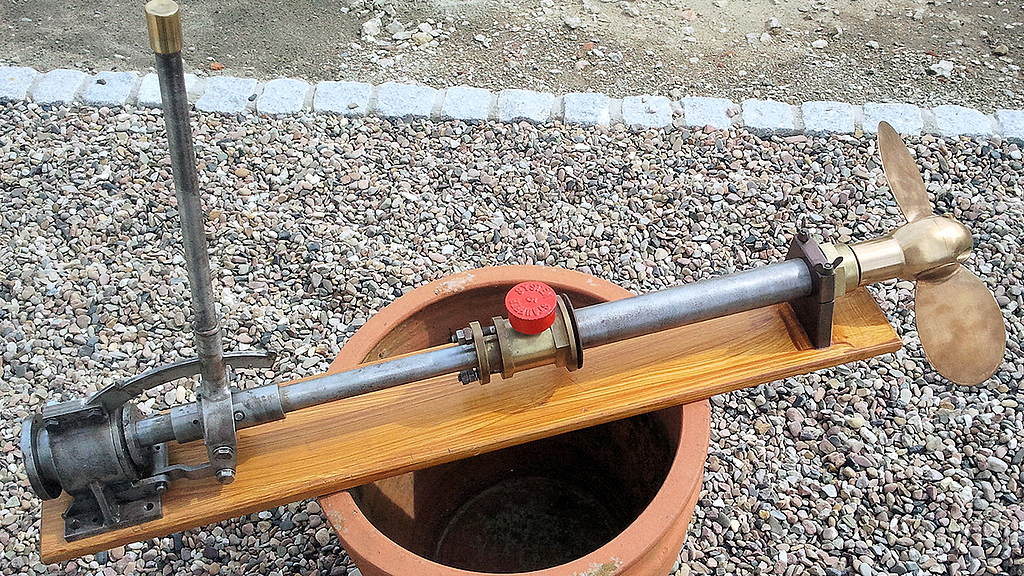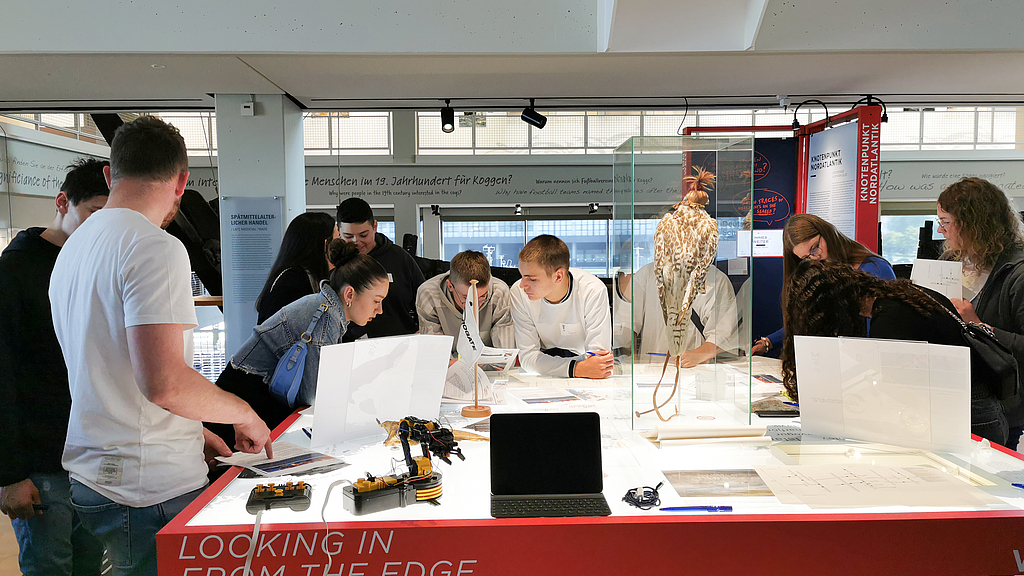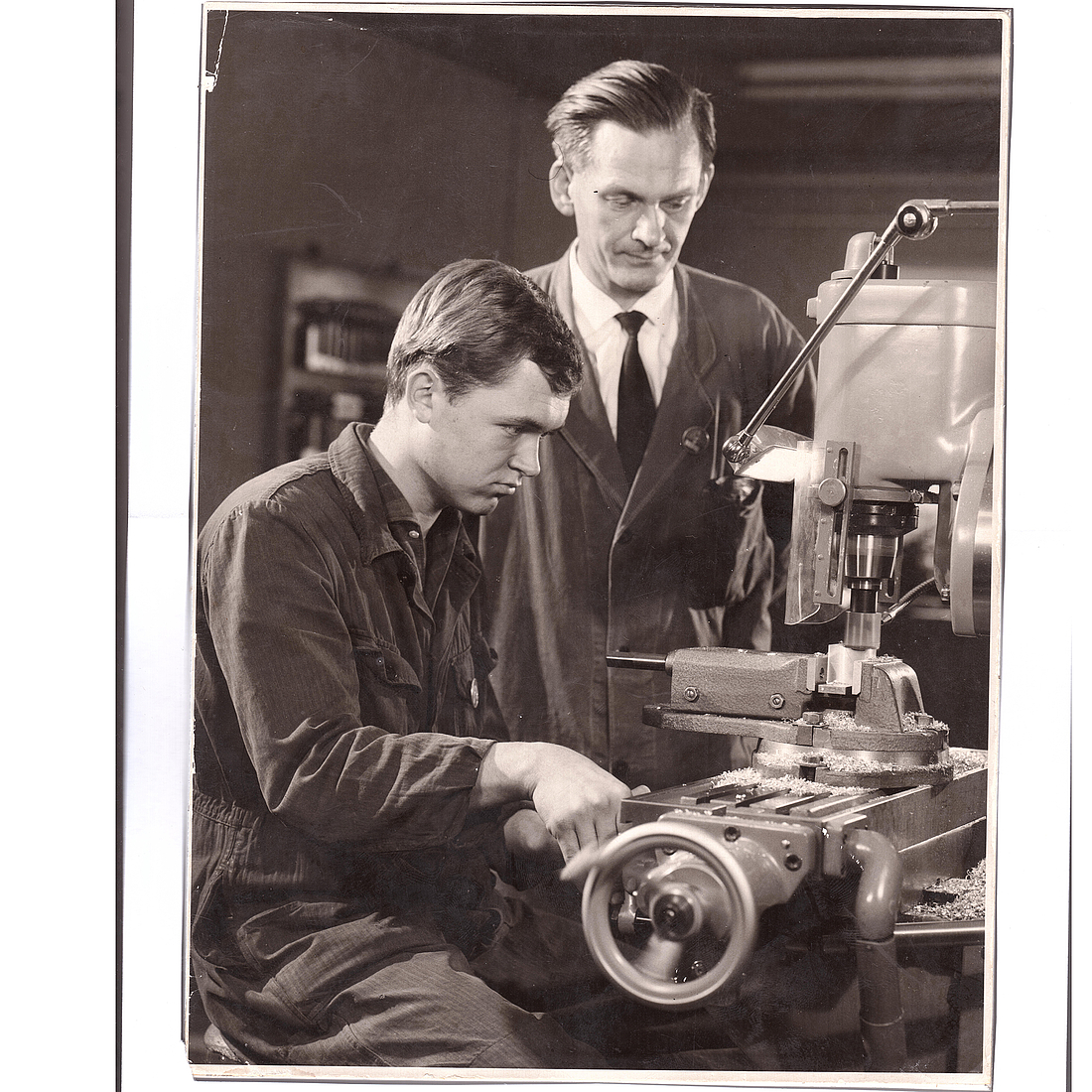Object of the month: The masterpiece of a wave system
An archive treasure is presented every month. On the occasion of the upcoming second trainee regatta on August 22, where students meet trainees from the maritime industry, the director of the DSM, Prof. Dr. Ruth Schilling, announces the object of the month: The model of a wave system.
"The marine shaft device is used to transmit the rotary motion or rotary power of the propulsion engine to the propeller, as well as to absorb the propeller thrust and transfer it to the ship's hull."
While the ship's propeller occupies a prominent place in the history of shipbuilding, as it helped steam propulsion to make its real breakthrough, the associated shaft systems, as a necessary aid for the use of the propellers, tend to go unnoticed in the historical reappraisal of shipbuilding, probably also because they are a less prominent part of the ship's appearance. In any case, their lack of maintenance can have a decisive effect on the navigability of large ships in particular. In this way, shafting systems received special attention in the business of ship insurers and maritime jurisdiction. A cursory search revealed at least one judgment in which an engineer was banned from his profession in 1883 because he had neglected the maintenance of the shaft system on the screw steamer BERNHARD. Further research would have been possible within the framework of a small historical research project.
The model of a wave system that is the subject of this article was not intended for the operation of large seagoing vessels, as can easily be seen from its dimensions. This miniature shafting system was intended for demonstration purposes and not for use. It was therefore also coupled with a propeller. It was manufactured by Walter Weihmann at the beginning of the 1950s. Walter Weihmann was born in Lemwerder on May 15, 1923. After an apprenticeship at the Abeking & Rasmussen shipyard, he served as a soldier in the Second World War and was taken prisoner of war, from which he returned to Lemwerder shortly after the end of the war. There, in 1950, Friedrich Stöver founded a company for machine and apparatus construction for the small ship and motor ship sector. The company still exists today. Walter Weihmann worked there until 1959, during which time he passed his master craftsman's examination as a master lathe operator. His masterpiece was this shaft system, which is still in very good condition today. Oral tradition within the Weihmann family states that the examination board at the time only decided on a "four" as the examination grade, as the experts found that the piece looked too precisely made to have been produced solely by hand.
We are unable to issue a proper rehabilitation in the context of this presentation, as the sources cannot be verified. However, the commission's indirect praise is justified: the piece is a true masterpiece. It did not harm Walter Weihmann's future career. In fact, he himself became a mechanical engineering instructor at the Lemwerder headquarters of Weser-Flugzeugbau GmBH ("Weserflug" for short) one year after his master craftsman's examination. A photo shows him dressed for his position and looking benevolent. Unfortunately, nothing concrete has come down to us about the identity of the apprentice.
The model of the shaft system came to the DSM in 2014. On the one hand, it beautifully illustrates the functional principles of shaft systems. Secondly, it is in a robust condition and could therefore also be used as an authentic 'hands-on model'. So why hasn't it found its way into the shipbuilding section of our new permanent exhibition "Ship Worlds - the Ocean and Us"? This can be viewed in our extension building from July 18. In it, we have decided to focus primarily on the production of large seagoing vessels and thus also the global economic cycles and highly complex material production processes. We want to illustrate the enormous dimensions of these ships and their construction at a glance.
We have therefore decided - sometimes with a heavy heart - not to show many relevant objects from our collection, particularly from the area of small shipbuilding. This does not mean that they cannot be presented as part of special exhibitions in the future.
We want to present this model in August 2024, as we are now inviting trainees to our "Trainee Regatta" for the second time: Apprentices from very different sectors of the maritime industry explain their professions to school pupils and go through various challenges in our exhibition. The response to this format, which we are able to carry out thanks to the support of the Maritime Cluster Northern Germany and the DSM Sponsors' Association, continues to be great and demonstrates the need for a neutral platform for exchange between different age and professional groups.

Figure 1: Model of a wave system
Photo: Weihmann family

Figure 2: Walter Weihmann as an instructor
Photo: Weihmann family

First trainee regatta in 2023
Photo: DSM / Annica Müllenberg

